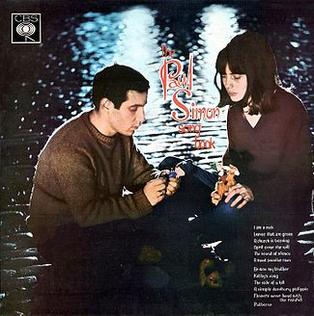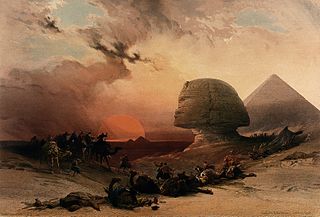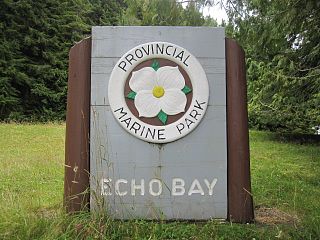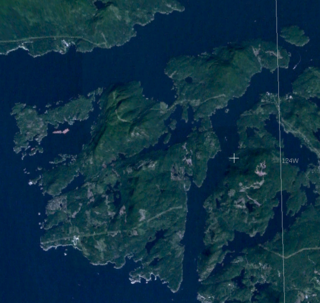See also
| This disambiguation page lists articles associated with the title Simoom. If an internal link led you here, you may wish to change the link to point directly to the intended article. |
Simoom is a strong, dry, dust-laden local wind in Sahara, Palestine, Jordan, Syria, and the Arabian Peninsula.
Simoom may also refer to:
| This disambiguation page lists articles associated with the title Simoom. If an internal link led you here, you may wish to change the link to point directly to the intended article. |

Simon & Garfunkel were an American folk-rock duo consisting of singer-songwriter Paul Simon and singer Art Garfunkel. One of the best-selling music groups of the 1960s, their biggest hits—including "The Sound of Silence" (1965), "Mrs. Robinson" (1968), "The Boxer" (1969), and "Bridge over Troubled Water" (1970)—reached number one on singles charts worldwide.

The Paul Simon Songbook is the first solo studio album by Paul Simon. It was released in the UK in 1965. It was made available in the U.S. as part of the LP box set Paul Simon: Collected Works (1981). The album was produced by Reginald Warburton and Stanley West as CBS Records LP 62579; remastered CD Columbia/Legacy 90281.
Discovery may refer to:

Point of Entry is the seventh studio album by English heavy metal band Judas Priest, released on 26 February 1981 by Columbia Records. Following the commercial success of their previous album British Steel (1980), the band pursued a more radio-friendly direction on Point of Entry. Following the conclusion of the British Steel World Tour, the band began work on their next project. By this time, they had sufficient funds to fly all their equipment to the state-of-the-art Ibiza Studios in Spain. This gave Point of Entry a louder, stronger, more "live" sound than previous Judas Priest albums.

Christine Fellows is a Canadian folk-pop singer-songwriter from Winnipeg, Manitoba.

Simoom is a strong, dry, dust-laden wind. The word is generally used to describe a local wind that blows in the Sahara, Israel, Palestine, Jordan, Syria, and the deserts of Arabian Peninsula. Its temperature may exceed 54 °C (129 °F) and the humidity may fall below 10%.
Kingcome Inlet is one of the lesser principal fjords of the British Columbia Coast, north and east of Broughton Island. It is sixth in sequence of the major saltwater fjords north from the 49th parallel near Vancouver and similar in width, on average 2.5 km (1.6 mi), to longer inlets such as Knight Inlet and Bute Inlet, but it is only 35 km (22 mi) in length from the mouth of the Kingcome River to Sutlej Channel, which ultimately connects around Broughton Island to the main regional waterway of the Queen Charlotte Strait. Kingcome Inlet has a short side inlet, Wakeman Sound, fed by the Wakeman River.

Echo Bay Marine Provincial Park is a provincial park in British Columbia, Canada, established in 1971 and containing 4.66 acres (18,900 m2). It is located at the bay of the same name, offshore from the community of the same name, which is the location of the Simoom Sound post office and is on the west side of Gilford Island.

Nelson Island is an island in the Sunshine Coast region of the South Coast region of British Columbia. It is surrounded by Hotham Sound, Agamemnon Channel, and Malaspina Strait. The closest communities are Pender Harbour, British Columbia and Egmont, both on the Sechelt Peninsula.

HMS Simoom was a third-batch S-class submarine built for the Royal Navy during World War II. She was laid down on 14 July 1941 and launched on 12 October 1942.
Allison may refer to:
Simoom Sound is a sound on the Central Coast of British Columbia, Canada, located on the east and north sides of the Wishart Peninsula between Tribune Channel and Kingcome Inlet. The former steamer landing, now classified as a "locality", and the post office of Simoom Sound, British Columbia, located in Echo Bay on Gilford Island, is named after the sound. Kawages Indian Reserve No. 4 is located on the north side of Simoom Sound and is a reserve of the Dzawada'enuxw First Nation of the Kwakwaka'wakw peoples.

Simoom Sound is a post office located at Echo Bay, British Columbia, Canada, on Gilford Island in the Central Coast region adjacent to the body of water of the same name, which was named for HMS Simoom. The name formerly applied to a location on the nearby Wishart Peninsula as a steamer landing but was moved to Echo Bay when the former location became depopulated.

Echo Bay is an unincorporated settlement located on the west side of Gilford Island in the Broughton Archipelago on the Central Coast of British Columbia, Canada. It is the location of the Simoom Sound post office, which used to be on the nearby Wishart Peninsula facing the sound of the same name.
Relay Hills is a group of low, ice-covered hills, mainly conical in shape, between Mount Edgell and Kinnear Mountains in western Antarctic Peninsula. First roughly surveyed from the ground by British Graham Land Expedition (BGLE), 1936–37. Photographed from the air by Ronne Antarctic Research Expedition (RARE), November 1947. Resurveyed by Falkland Islands Dependencies Survey (FIDS), November 1958. The name, applied by the United Kingdom Antarctic Place-Names Committee (UK-APC), arose because both the BGLE and the FIDS sledging parties had to relay their loads through this area to the head of Prospect Glacier.

HMS Simoom was an iron frigate converted to an iron screw troopship. She was laid down in October 1845; however, on 23 April 1847 her frigate design was abandoned as this type of iron warship was considered to be unsuitable against cannon fire and she was ordered to be completed as a troopship. She was launched by Robert Napier and Sons in Govan, Yard No 17, on 24 May 1849, then sold to Collings, Dartmouth in June 1887.

HMS Simoom was an S-class destroyer which served with the Royal Navy. Launched on 26 January 1918, the vessel operated as part of the Grand Fleet during the last months of World War I. At the end of the conflict, Simoom was placed in reserve and scrapped on 8 January 1931. The name was reused from an R-class destroyer sunk on 23 January 1917.

HMS Simoom was an R-class destroyer which served with the Royal Navy during World War I. Launched on 30 October 1916, the vessel operated as part of the Harwich Force until torpedoed by the German destroyer S50 on 23 January 1917. The ship's magazine exploded and 47 lives were lost. The name was reused by the first S-class destroyer, Simoom, launched on 26 January 1918.